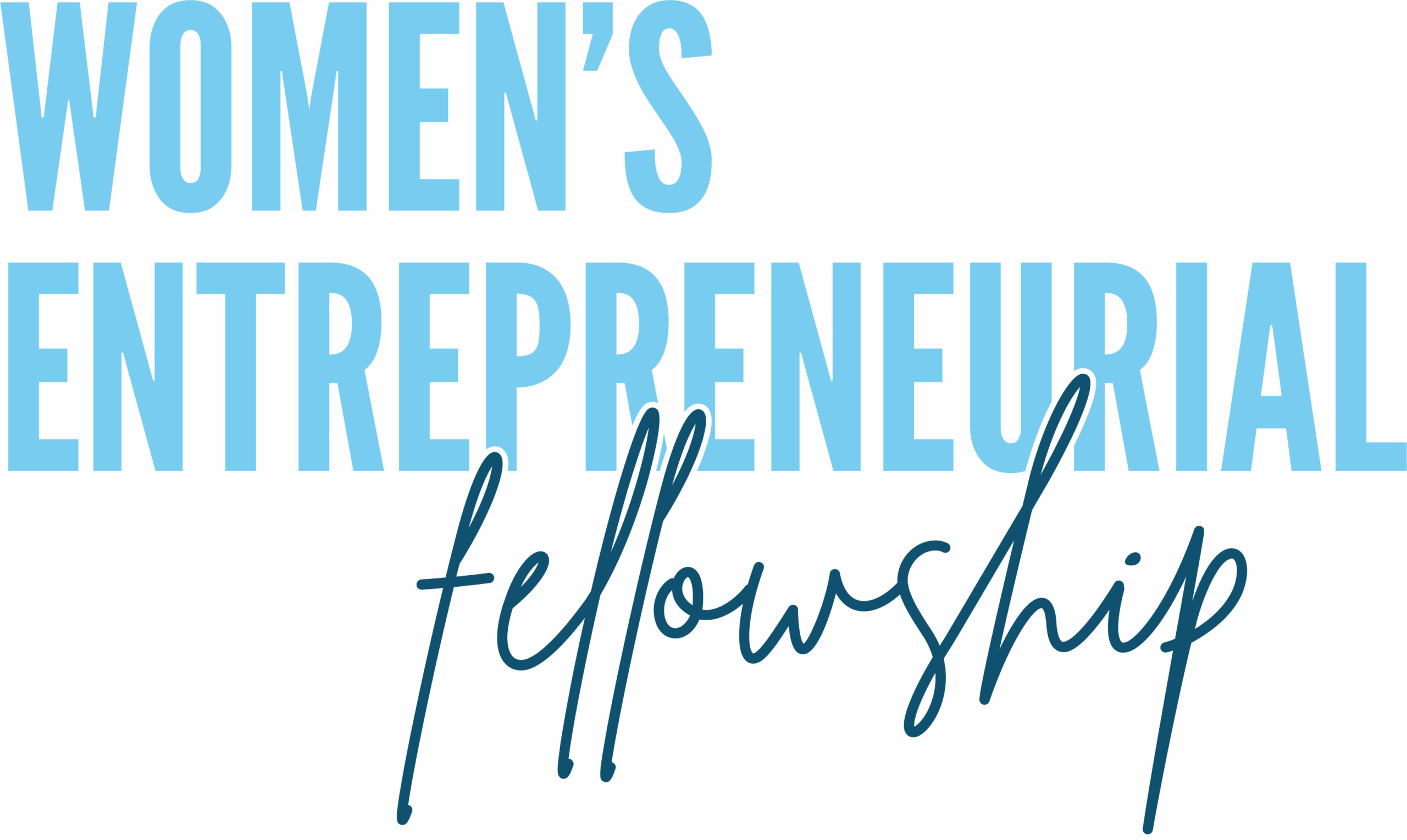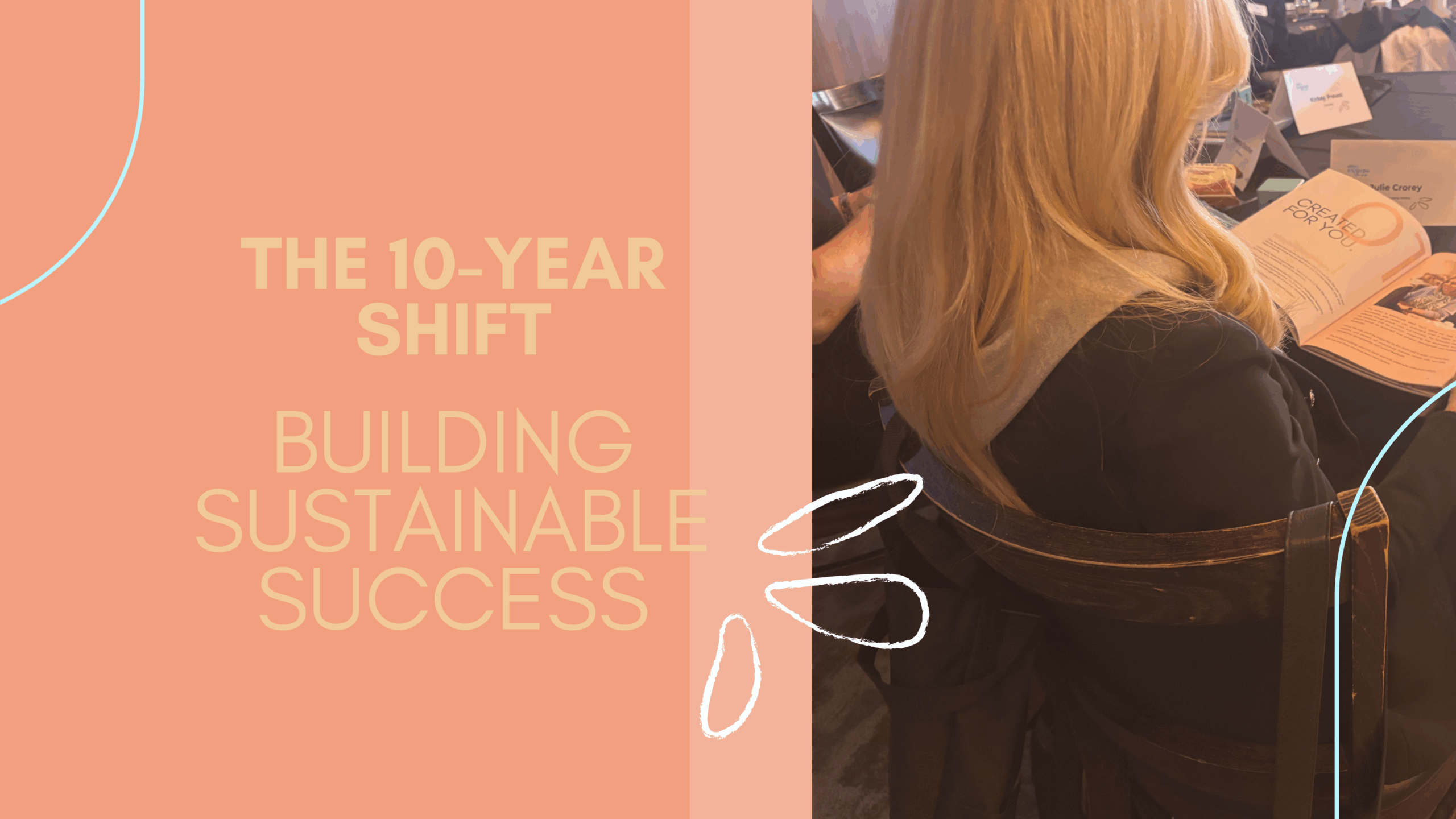Planning or thinking 10 years in the future seems impossible. What business owner does that when every hour, day, week, and month feels like a constant struggle or fire to put out?
Part of what makes us exceptional business owners is also slowly killing us. We’re incredibly empathetic, we feel deeply, and on top of building businesses and leading teams, we’re also raising families, managing households, and running everyone else’s lives.
When the day-to-day feels like drowning, imagining ten years ahead can feel absurd, even selfish, but every entrepreneur who has built something lasting has made the conscious choice to think bigger than their current circumstances.
The Women’s Entrepreneurial Fellowship centers on the 10-Year Shift. It’s about fundamentally changing how business owners think about time, decisions, and the cost of success. It’s a core part of the program methodology, where we ask business owners to imagine where they want to be a decade from now and then give them the resources, tools, and advice over nine months to help them get there.
Something has to give.
Eighty-three percent of women business owners experience persistent, high-level stress. More than half are experiencing actual burnout, not just occasional exhaustion, but a level of fatigue that makes it difficult to get out of bed.
Women are doing more with fewer resources while absorbing disproportionate caregiving and household responsibilities. The system itself produces these outcomes, and advice designed for someone else’s life—one without school pickups, aging parents, or invisible labor—doesn’t solve the problem.
Ten Years Changes Everything
The 10-Year Shift changes how you evaluate every opportunity by connecting personal sustainability with business efficiency. When Fellows begin the nine-month program, they write down a specific date ten years out and the number one, most singularly important goal to them.
This longer view shifts immediate choices. That lucrative client misaligned with your values becomes easier to decline. The investment in team culture with no immediate ROI becomes obvious when you’re designing for durability instead of quarterly numbers. Throughout the Fellowship, the cohort revisits this future vision while tackling present challenges—examining leadership styles through Kolbe assessments, designing financial systems for sustainability, and building teams by asking “what kind of workplace do I want to sustain?”
Fellows track where hours actually go, identify what drains versus energizes them, and protect finite capacity accordingly. They schedule rest days as non-negotiables and practice gratitude—tangible reminders that success includes well-being, not just revenue. Research shows that women entrepreneurs focused on longevity report seventy-three percent genuine optimism about their future.
Crisis planning sessions force decisions about which assets matter most for long-term resilience. Succession and legacy conversations confront what they’re building beyond profit. By the final session, Fellows present their 10-Year Shift to peers, demonstrating how their perspective has changed and what commitments they’ll maintain even when urgency returns.
What Comes After
Women-owned businesses generate $2.7 trillion annually. We own 44% of all small businesses in this country. When we’re given the frameworks and support to plan long-term, our businesses create 2.8 times the economic impact.
If we don’t make this shift. If we don’t start building sustainably, then the next generation of women business owners will face the same obstacles we do.
It has to start with us.

